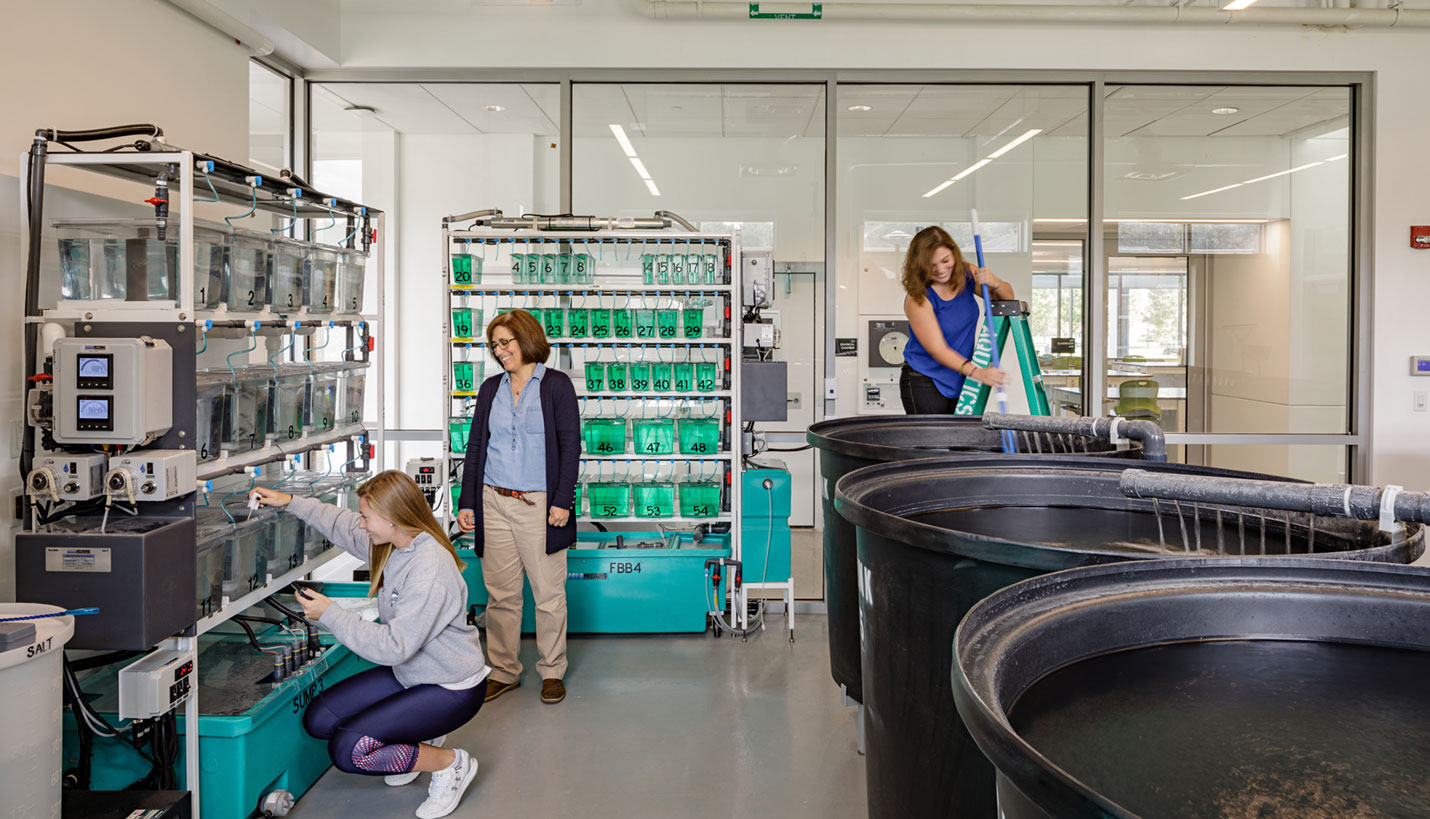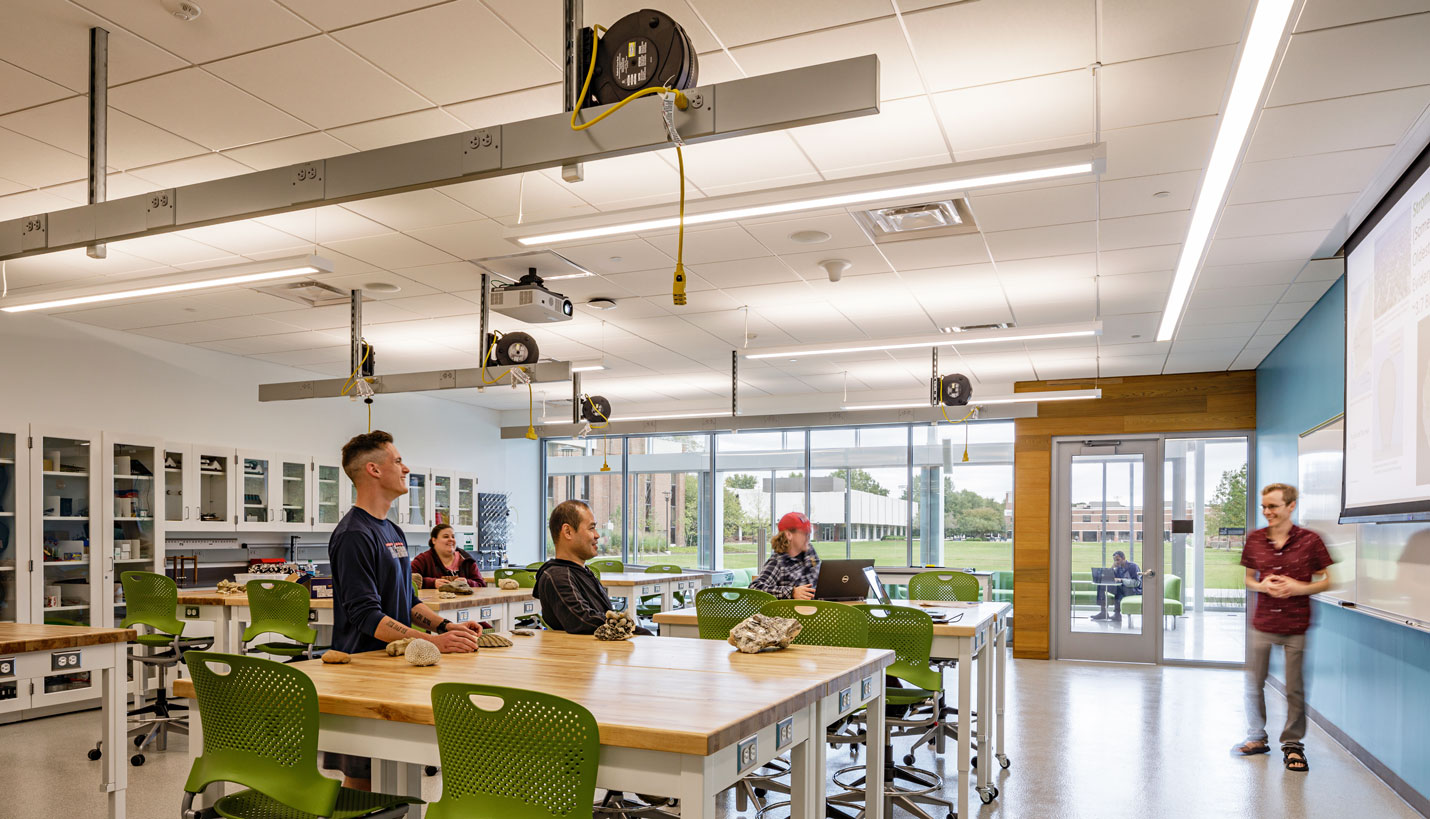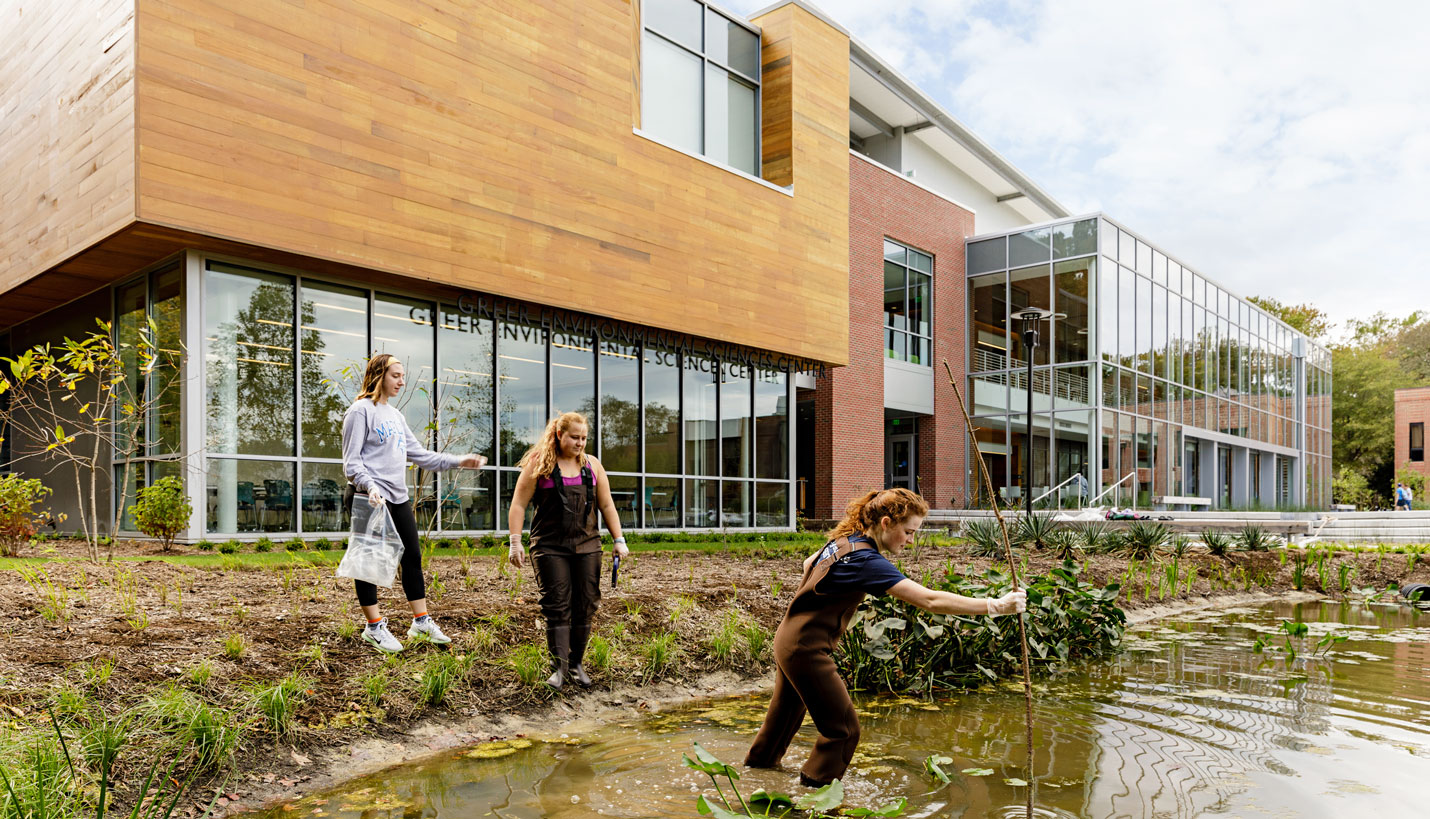Scientific Learning Spaces Activated as Teaching Tools
Tradeline, a facility planning and management resource, has taken note of the interdisciplinary science labs at Virginia Wesleyan University’s Greer Environmental Sciences Center, which opened last fall. The new facility was fully funded by an anonymous donor who wanted to honor the school’s president's long-standing commitment to environmental sustainability and advocacy for the sciences. VMDO Architects, which designed the science center, led the project team on which Page collaborated as programming, lab planning and lab design partner and was a key member of the team from the initial visioning sessions through design, construction and final occupancy.
The facility was designed to be an interactive “living lab” and instructional space. It contains four relatively large 1,300-sf teaching labs plus a chemistry lab; an ecology and marine biology lab, an earth science lab, an atmospheric and oceanography lab, a dedicated GIS lab and and an analytical chemistry lab with advanced instrumentation.
Page Principal David McCullough explained to Tradeline, “This is a very participatory building focused around the four main teaching labs that represent the four spheres [atmosphere, hydrosphere, geosphere, and biosphere], which are all connected. No matter where you are, you can see out and you can see in. You’re always participating in this building. That was very important to the university, this idea of connecting everything.”
Additionally, the science center also houses a nutrient analysis lab, Chesapeake Bay aquatics lab and a trace-metal analysis cleanroom. Five of the labs’ eight fume hoods are filtered to reduce the amount of air exchange needed. An environmental imaging suite is equipped with confocal and Fourier-transform infrared spectroscopy (FTIR) microscopes as well as other advanced light microscopes. But the distinguishing characteristic of the building is the integration of all the parts into a highly activated, participatory environment that engages the entire campus.
During the planning phase before design began, the university identified a desire to offer different modes of instruction and create an inviting environment to interest students in participating in research projects through hands-on experiences, interactive learning and interdisciplinary research. The resulting high quality labs allow students and faculty to collaborate on high-impact projects, and they have seen some faculty and students succeed in having their work published, which is rare at a small liberal arts institution.
McCullough is pleased with the completed facility, saying, “We wanted to activate the entire building as a teaching tool, not just put science on display.”
To read the full article about Virginia Wesleyan University’s Greer Environmental Sciences Center in Tradeline, click here.
02/14/2018
People
Related Posts
- Page Receives Award for Helping UConn Come Home
- Laboratory Design Process: Planning for Flexibility
- National Laboratory to Improve Health in the Caribbean
- Benchmarking and Trends Research: Promoting Innovation in Laboratory Design
- New National Reference Lab Coming Soon
- Collaborate to Design, Build a Lab: Three Essential Tactics
- 'Renovated Lab of the Year' transforms nondescript facility












